10 Common Myths About Autoflowering Cannabis Plants

- 1. Myth #1: autos are cbd rich
- 2. Myth #2: autos can’t be transplanted
- 3. Myth #3: all autos are less potent
- 4. Myth #4: autos can’t be cloned
- 5. Myth #5: all autos produce low yields
- 6. Myth #6: you can’t top autoflowers
- 7. Myth #7: autos are tasteless
- 8. Myth #8: autoflowers need 24hs of light
- 9. Myth #9: autoflowers cannot be trained
- 10. Myth #10: autoflowers take more time than specified
- 11. In conclusion
Autoflowers have been developed throughout the years, even though they were less potent and produced less than photoperiods, that has been left behind. If you want a cannabis plant that can produce as much as photos in less time, autoflowers will leave you amazed. Before autoflowering seeds where a big thing they weren’t very accepted by growers, you couldn’t find a lot of autos and when you did find one, you were most likely to be disappointed by the yields and quality. Nowadays autos crossed with Sativa and Indica strains and bred to produce huge yields and a more potent effect, allowing growers to get the same quality and effect while keeping the autoflowering trait.
The increased quality of modern autoflowering cultivars stems from considerable breeding efforts. Contemporary breeders have worked hard to hunt down the best pairs to match. In many cases, they have managed to create autoflowering versions of some of the most legendary varieties available. They’ve captured the traits of these timeless strains and combined them with the very best properties of autos, such as faster growing times, general hardiness, and ease of growth. Despite these advances, many myths persist about the quality of autoflowering cannabis genetics. Below, we’re going to bust these myths wide open. Follow along as we explain why these assumptions need to be put to rest.
Myth #1: Autos are CBD rich
Claim: “Autos are CBD rich”
Claimed by: Pioneers of Autoflowering Growing
Fact check by Fast Buds: False
It’s true that the ruderalis species is CBD-dominant and it is also true that autoflowering strains have Ruderalis genes but for some years breeders have been developing autoflowering strains to be THC-rich. Even though you can find CBD autoflowers suited for medical patients or for consumers that don’t like a euphoric effect, like our CBD Auto 20:1, there are a lot of autos that have a high THC content and can have the same potency (or even more potent) than photoperiodic strains while keeping the autoflowering trait, allowing you to have up to 3 cycles where you would only have 1 with photos1. As you might already know, both CBD and THC belong to a class of chemicals known as phytocannabinoids. Several environmental factors can impact the production of these secondary metabolites (molecules that plants produce largely to defend themselves), but genetics holds the biggest influence. You won’t find very much CBD or THC in raw cannabis flowers. Instead, they possess high levels of CBDA and THCA—the acidic forms of these chemicals. Both of these compounds start life as the so-called “mother cannabinoid” CBGA.
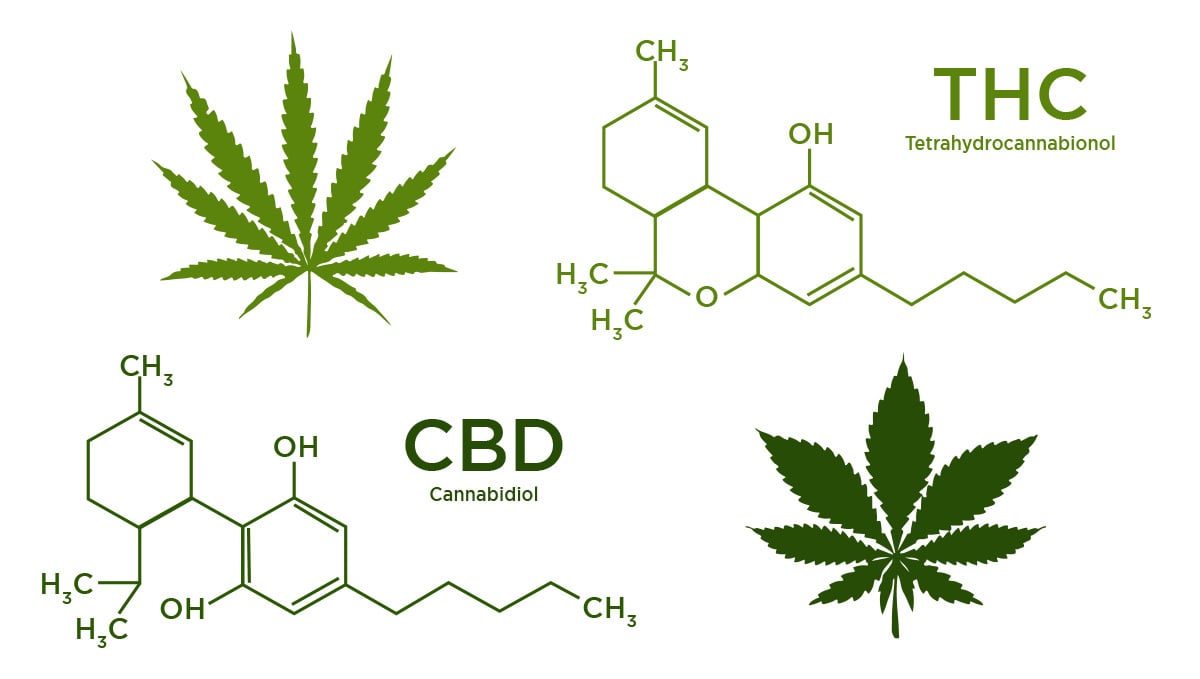
Ultimately, the cannabinoid content of an autoflowering strain depends completely on the aim of the breeder at the start of a breeding program. In the case of CBDA-rich autos, breeders immediately introduce genetics to express high levels of the cannabinoid, in order to promote the expression of this trait in the progeny. However, not every breeder wants high levels of CBDA expression. There are many modern autoflowering strains that possess THC levels above 20%. In fact, some of these potent cultivars actually produce more THC than many of their photoperiod counterparts. The bottom line: There are many auto varieties out there, some are high in CBD, others are very high in THC, and some have an equal blend of the two.
Whether a cannabis plant converts CBGA into either CBDA or THCA depends on genes that code for specific enzymes to kickstart these reactions. By crossing Ruderalis specimens with modern hybrids loaded with THC, breeders have managed to increase the levels of THCA synthase in these plants (the enzyme that converts CBGA into THCA) and subsequently increase THCA levels. When exposed to the heat of bong bowls, joints, or ovens, THCA converts into psychoactive THC through a process known as decarboxylation.
Myth #2: Autos can’t be transplanted
Claim: “Autos can’t be transplanted”
Claimed by: Pioneers of Autoflowering Growing
Fact check by Fast Buds: False
This is somewhat true, even though you can transplant your autos, you should be really careful because if you don’t take the appropriate care, you could shock them and it can affect the yields. Because autos take considerably less time from seed to harvest, shocking your plant can stunt growth, if you take into consideration that autos can take as little as 8 weeks to completely mature, even a couple of days of recovery from a transplant can result in an underwhelming harvest.
However, you can successfully transplant autoflowering cannabis strains and minimize the amount of stress they experience by getting your timing right. If for whatever reason, you need to start your seeds away from their final pot, you should select a container that isn’t too small. Once your plant is partially established, you should carefully monitor the drainage holes.
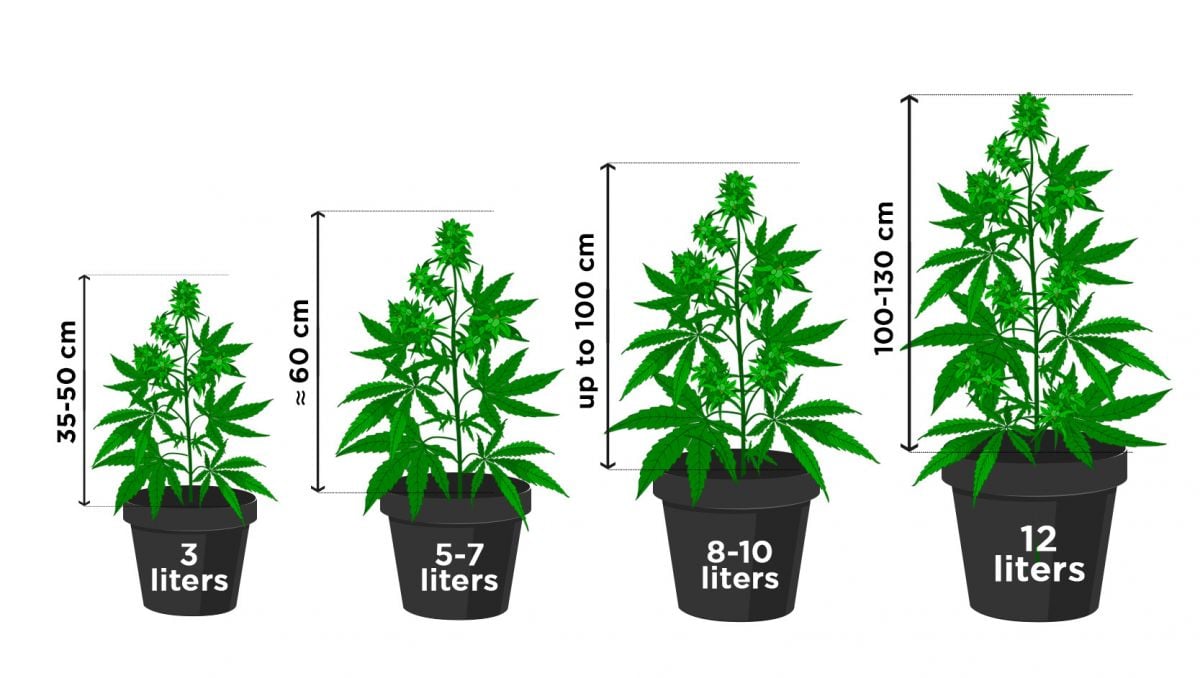
Ideally, you’ll transplant your plants before they fully grow into their initial container. Doing so means that they won’t take on the shape of the pot and start to exhibit the early signs of becoming root bound. Transplant them before this, and they’ll detect what’s happened! You should also allow them to adapt to their new pot in an area that has the same environmental variables, such as nighttime temperatures and lighting.
We recommend planting your autos in a big pot so you don’t have to transplant them but if you do have to, make sure you do it gently to try and minimize the stress, here are a couple of tips:
- Transplant your autos to the exact same medium mix.
- Make sure the soil they’re in is dry and the soil in the new pot is wet.
- Avoid squeezing the roots, leave a bit of space, and don’t press the soil too much. This way you avoid shocking them and root problems.
Myth #3: All autos are less potent
Claim: “All autos are less potent”
Claimed by: Pioneers of Autoflowering Growing
Fact check by Fast Buds: False
This is the most common question regarding autoflowers and for a time it was actually true, although now we have extremely potent autoflowering strains that can have up to 28.5% THC, being up to par with photoperiodic strains. This new autoflower genetics have a mix of Ruderalis, Indica, and Sativa genetics and can be truly amazing, a really good example is our new Gorilla Cookies Auto, even though it is an autoflowering strain, it has a high THC level and delivers a strong effect that is a mix of both cerebral and body highs.
This myth has persisted because old-school autoflowering strains paled in comparison to photoperiod varieties when it came to THC content. However, any grower that still believes this is true simply hasn’t kept up with modern autoflowering cultivars. New-school autos are on par with many modern photoperiod strains in regard to their concentration of psychoactive phytochemicals.
Myth #4: Autos can’t be cloned
Claim: “Autos can’t be cloned”
Claimed by: Pioneers of Autoflowering Growing
Fact check by Fast Buds: False
As hard as it may seem to believe this, it is not actually true. You actually can clone autoflowers but due to the autoflowering trait, clones won’t have a lot of time to develop and won’t grow too much.
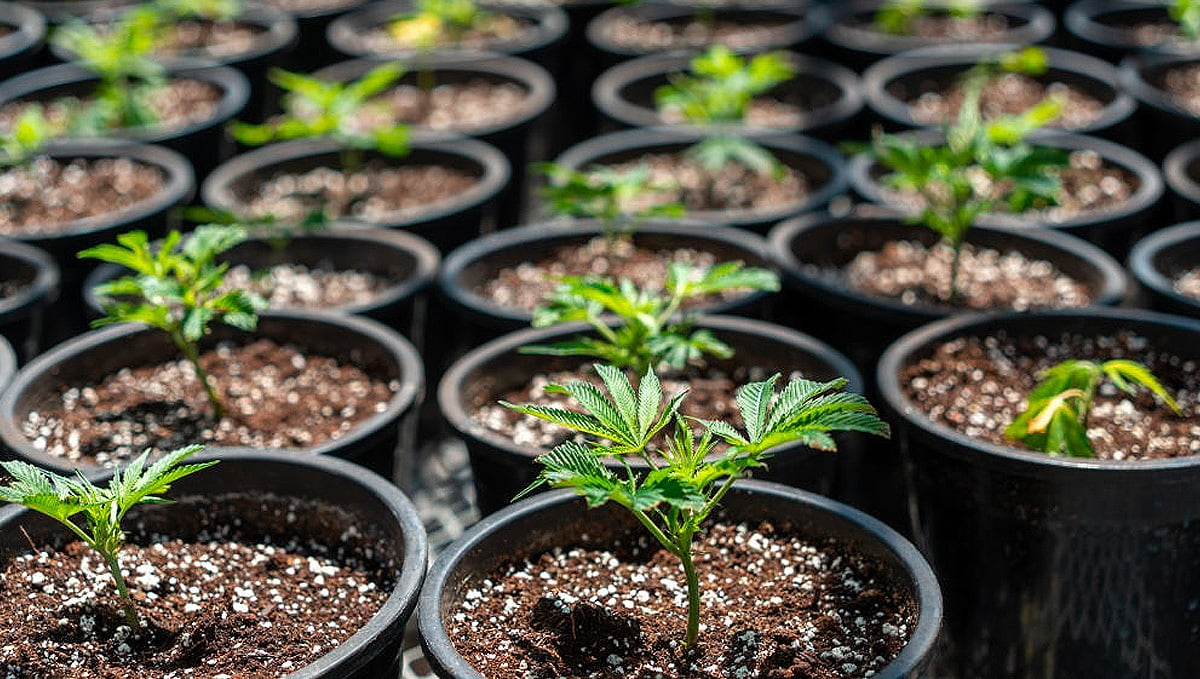
Growers usually don’t clone auto strains due to the risk of shocking your plants, it's not worth it to risk your harvest because the clones usually grow short and don’t have time to produce big yields.
Autoflowering strains enter the flowering phase based on age instead of external lighting conditions; some varieties are known to surge from seed to harvest in as little as eight weeks. Because a clone creates a biological copy of the mother plant, the cutting also shares the same age. That means your small cutting might only have around 5–6 weeks to establish some size before it goes to flower—resulting in small clones with minor yields.
In contrast, photoperiod strains depend on a reduction in light to initiate the flowering stage. This cue indicates the approaching autumn and plants get the message that they need to hurry up and reproduce before the frosts arrive. Growers can use artificial conditions to keep their plants in the vegetative phase for as long as they see fit. This gives them time to grow out clones into large plants before forcing them into flowering.
Myth #5: All autos produce low yields
Claim: “All autos produce low yields”
Claimed by: Pioneers of Autoflowering Growing
Fact check by Fast Buds: False
This is a myth that may have originated when the first autoflowering strains were appearing, although it was true, it is completely false nowadays. Indeed some autos can have lower yields because of their size, but there is a lot of autoflowering genetics that have been developed so well and for such a long time that they can grow up to 150cm and produce up to 650gr/m2 in around 10 weeks, that is the case of our Orange Sherbet Auto.
Have in mind that because photoperiodic cannabis grows for much longer, it has time to grow taller and that results in a bigger yield but autoflowers can also produce big yields and it solely depends on the genetics and your growing equipment.
Myth #6: You can’t top autoflowers
Claim: “You can’t top autoflowers”
Claimed by: Pioneers of Autoflowering Growing
Fact check by Fast Buds: False
This myth will surely divide growers, some growers swear that it works and others don’t. The truth is: you won’t always have the expected result when topping because this depends on your experience and the genetics you’re growing.

For example, if you are planning on topping an Indica-dominant auto you probably won’t have the expected result because Indicas tend to grow compact, with few side branches and small internode spacing. Now, if you are growing a taller Sativa-dominant strain, like our Tangie’matic you may actually benefit from it (if done correctly).
Myth #7: Autos are tasteless
Claim: “Autos are tasteless”
Claimed by: Pioneers of Autoflowering Growing
Fact check by Fast Buds: False
Good autoflowering genetics have all the same cannabinoids and terpenes photoperiodic strains have2.
The smell solely depends on your ability as a grower and on the genetics you’re growing, obviously, if you have experience and grow bad genetics or if you grow good genetics but don’t have experience the results won’t be what you expect.
The idea that autoflowering cannabis strains are tasteless has its roots in a misunderstanding of phytochemistry. Several groups of chemicals contribute to the unique flavors of each cultivar. Among these groups, terpenes play a major role. These aromatic hydrocarbons are synthesized alongside cannabinoids in the glandular trichomes of cannabis flowers. Cannabis plants spend resources making these molecules for several reasons, including defense against UV rays and pests. Some of the most abundant terpenes in cannabis include beta-caryophyllene, pinene, myrcene, and limonene. These components produce a range of flavors, including fruit, earthiness, sweetness, and sourness. To say autos are tasteless is to imply that they don’t make terpenes, which is categorically incorrect.
To harvest delicious tasting flowers you need to have a bit of experience that combined with good genetics will result in what you aim for, we recommend growing our Strawberry Pie Auto, she offers a beautiful combination of colors and smells that will leave everyone with their mouths watering.
Myth #8: Autoflowers need 24hs of light
Claim: “Autoflowers need 24hs of light”
Claimed by: Pioneers of Autoflowering Growing
Fact check by Fast Buds: False
This isn’t actually a myth but more of a preference. It is true that some strains grow better in a 24/0 light cycle, but others grow better in a 16/8 cycle because they prefer more darkness and others develop better in a 18/6 or a 20/4 light cycle because they can’t take too much light. This will depend on what you aim for and what your strain can take, you can get higher yields by providing more light but not every strain can take it well, so it’s just a matter of experimenting.
| Light Cycle | 24/0 | 18/6 | 12/12 |
|---|---|---|---|
| Hours of Light | 24 | 18 | 12 |
| Hours of Darkness | 0 | 6 | 12 |
| Pros | Doesn't require a timer and can result in best yields | Allows plants to rest, good buds and saves electricity up to 25% | Saves electricity up to 50% |
| Cons | Can get expensive | Requires a timer | Underdeveloped and aery buds |
Myth #9: Autoflowers cannot be trained
Claim: “Autoflowers cannot be trained”
Claimed by: Pioneers of Autoflowering Growing
Fact check by Fast Buds: False
This myth is completely false, autoflowers can be trained and even should in some cases, although there are different types of plant training that can be classified in LST or HST, depending on the one you choose, it can stress your plants. We recommend performing LST techniques with autos, this way you can get the same results (even though it takes a little bit more work) as you would with high-stress plant training while minimizing the time it takes for them to recover, especially with more resistant plants that produce several side branches like our Z Auto.
Myth #10: Autoflowers take more time than specified
Claim: “Autoflowers take more time than specified”
Claimed by: Pioneers of Autoflowering Growing
Fact check by Fast Buds: False
Ok, so this isn’t a myth, you have to remember that the time breeders specify is when you provide an optimal growing environment for your plants, your plants can and will take more if you don’t have the appropriate humidity levels, temperature, lights, and nutrients. Now, this isn’t such a bad thing because if you don’t have a good growing environment, the buds will not get super dense so even though they’ll take more, you will be satisfied with the results of your harvest. You can always chop them before they’re ready if you need to but the result won’t be as good as letting them grow for a little bit longer.
11. In conclusion
Even though autoflowers were not that good some years ago, they have progressed a lot, nowadays you can find strains that suit every grower and have selected traits from Indica and Sativa plants.
Just make sure you’re providing a good growing environment and you will be rewarded with dense super tasty buds, please leave us a comment below sharing your experience with autoflowering cannabis!
External references:
- Therapeutic uses of cannabis - Association, British (2020).
- Terpene synthases from Cannabis sativa - Booth, Judith & Page, Jonathan & Bohlmann, Joerg (2017).
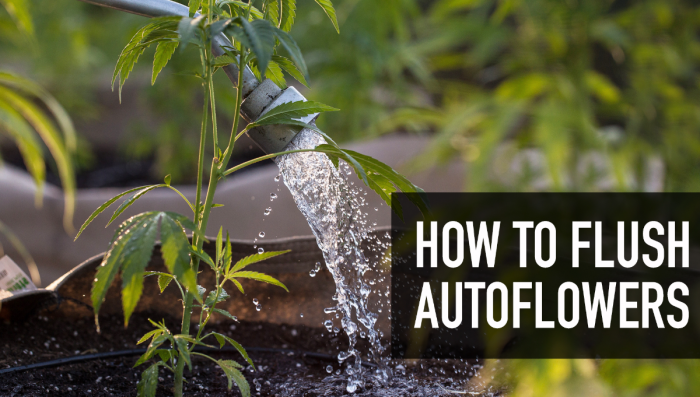








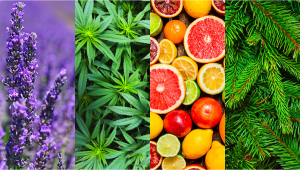


Comments